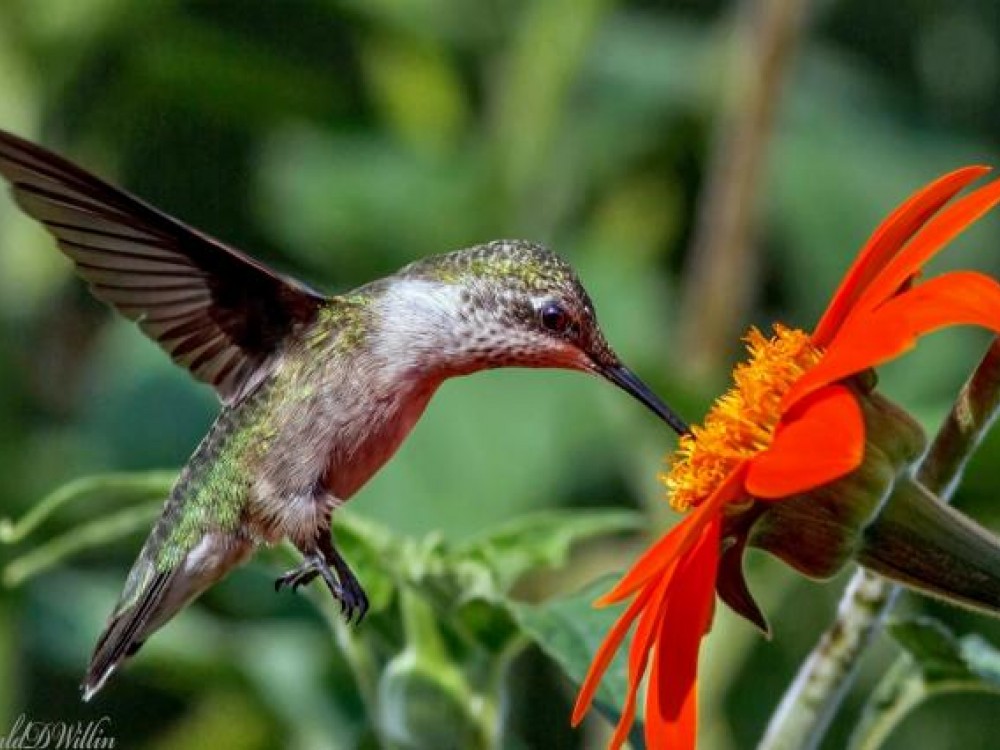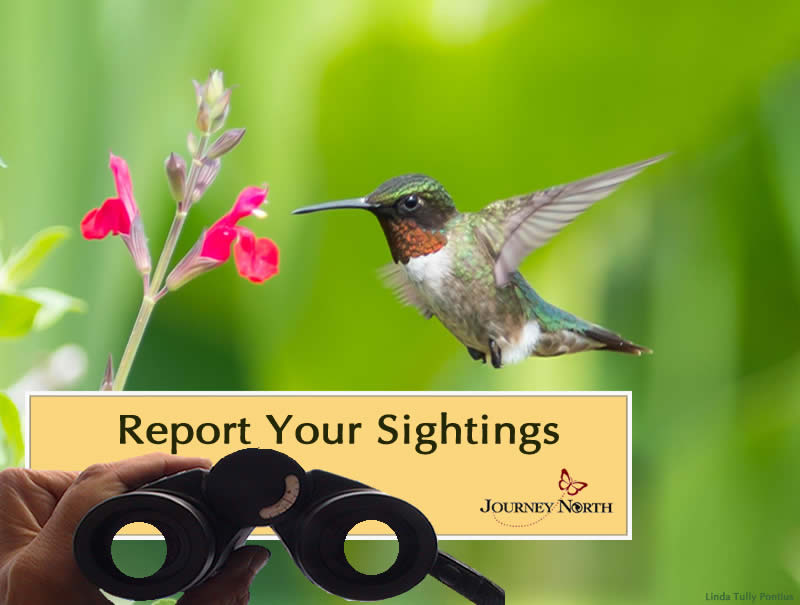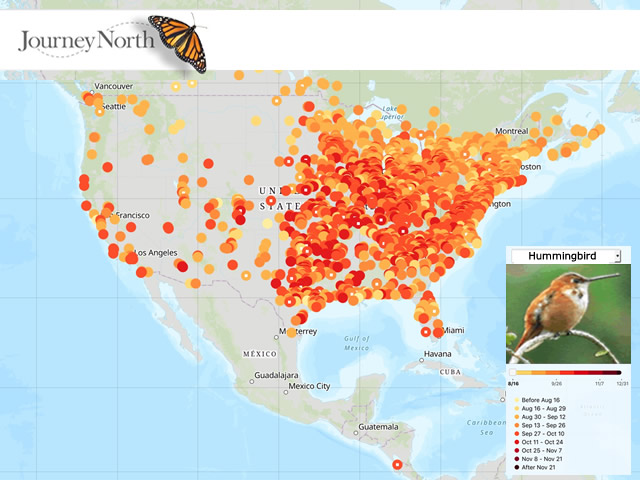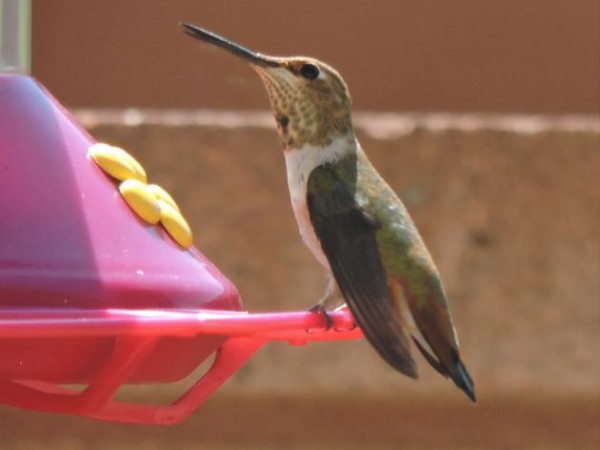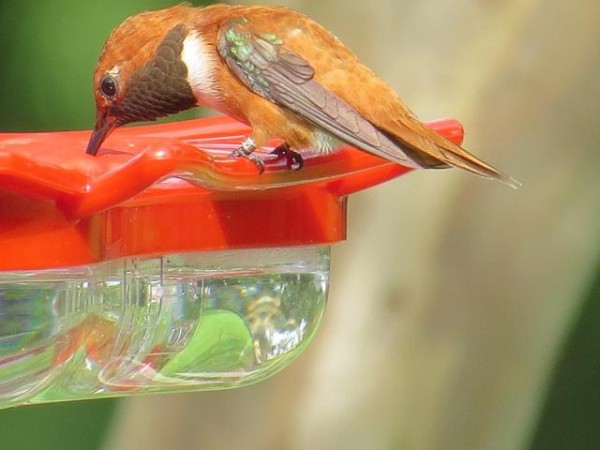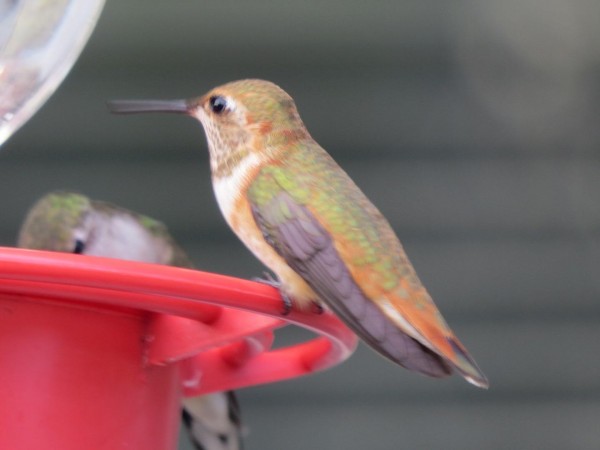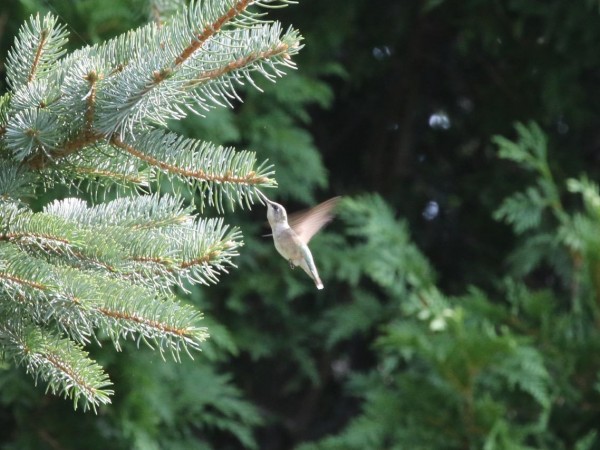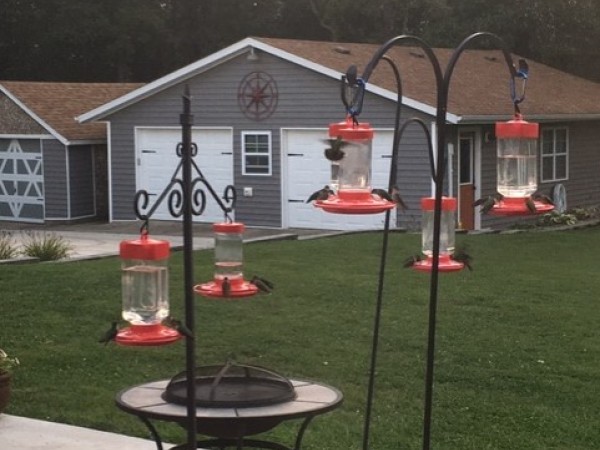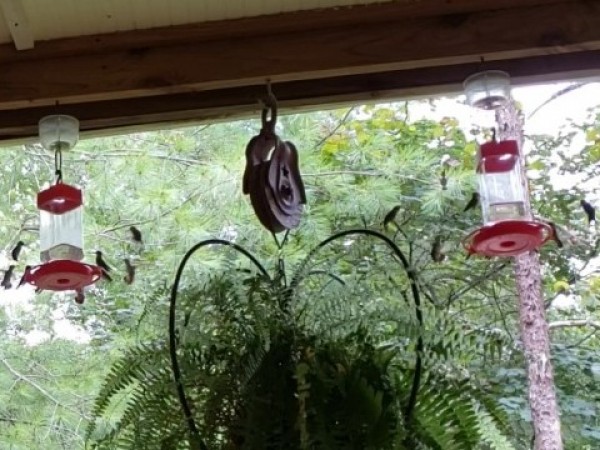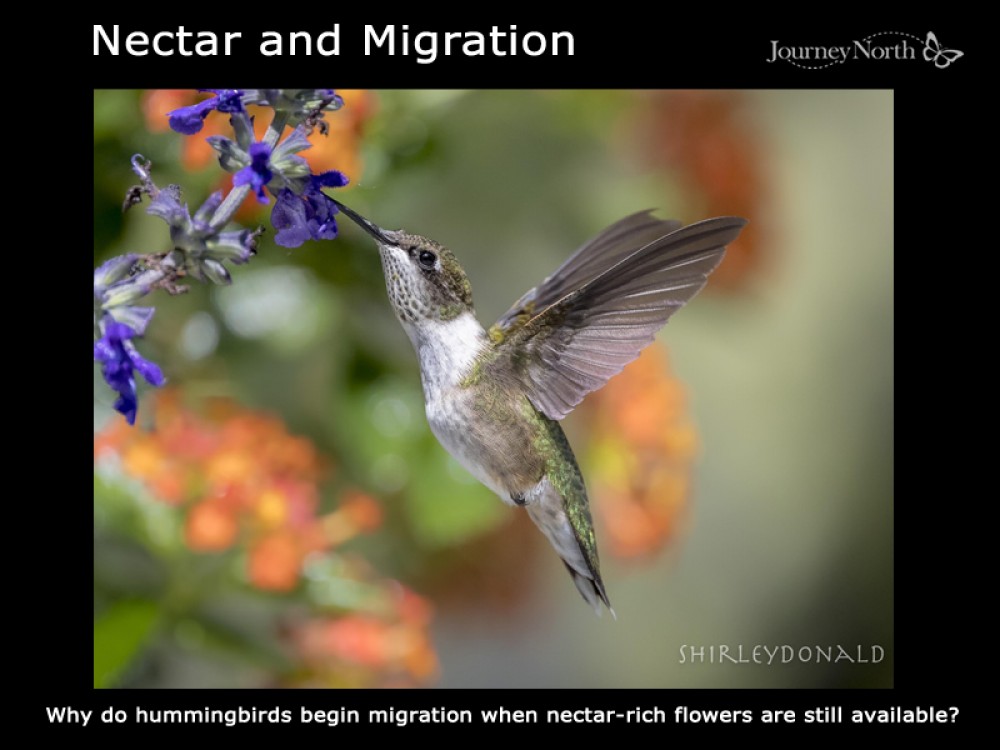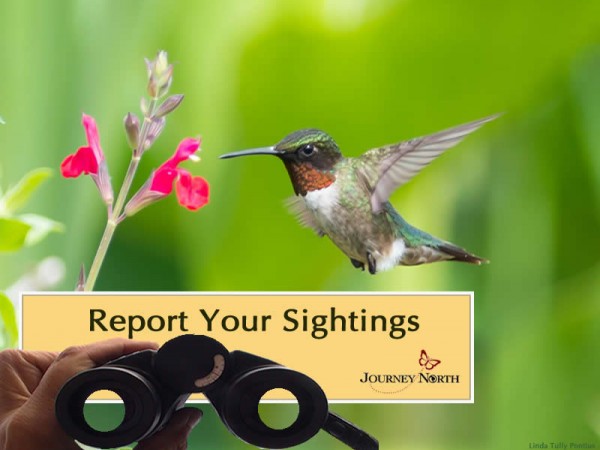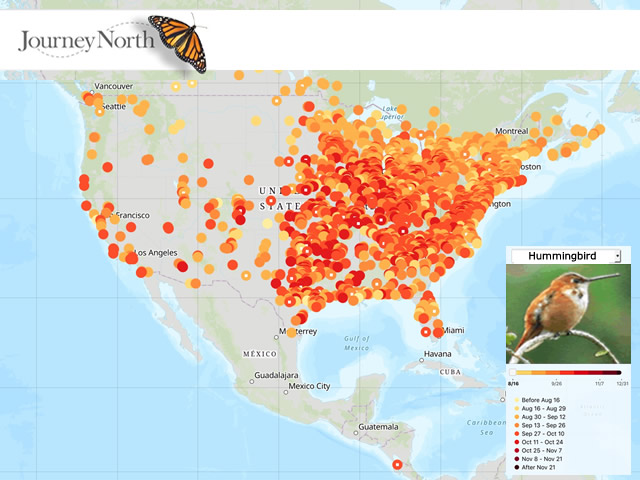Fueling Up
Journeying South
Fewer hours of daylight trigger the hormonal changes that cause the urge to fuel up and fly south. Hummingbirds that graced backyard gardens and feeders this summer have begun their migration south.
Hummingbirds that breed in North America, such as Ruby-throated hummingbirds, overwinter between southern Mexico and northern Panama. For Ruby-throated hummingbirds, southward migration peaks sometime between August and early September. By mid-September, many of the Ruby-throated hummingbirds at your backyard feeders are migrating through from farther north.
Other species, such as Rufous and Black-chinned hummingbirds, migrate to southern regions of the United States. Migration pathways are different for each hummingbird species. Some species may follow coastlines while others fly along the spine of the Rockies. Some hummingbird species cross the Gulf of Mexico which is an 18-to 22-hour, non-stop flight.
Recently, there has been a flurry of reports from Journey North citizen scientists along the Gulf of Mexico.
From Ivins, UT: Karla notes "another Rufous on his way". (09/03/2019)
From Schriever, LA: Diana noted, "Returning Male Rufous for past reported 5 years. I can see the [band number] in photo. He usually stays until spring." Banded by Nancy Newfield. (08/16/2019)
From Robstown, TX: Christy submitted this comment: "Today was my first time seeing a Rufous. Very exciting to have one at my feeder. I have many, many Ruby-throated." (08/31/2019)
Whichever pathway is taken, a successful migration journey requires energy.
Finding Fuel
Hummingbirds rely nectar-rich flower gardens and the presence of insects to fuel their migration south. Hummingbirds use a lot of energy as they dart among flowers to drink nectar and fly along tips of tree branches to catch insects.
From Macks Creek, MO: Teresa commented: "Busiest migration in past 10 years." (08/27/2019)
From Centerville, MO: Keith notes that he is using "about 2 gallons a day" in his feeders. (08/27/2019)
These tiny birds are big eaters. No animal on earth has a faster metabolism. They are burning energy so fast that they need to eat 1.5 to 3 times their weight in food each day. One hummer can visit as many as two hundred flowers in fifteen minutes.
Troubling Weather
Weather affects the flight of these small birds as they make their way south. Hurricanes and other tropical storms pose challenges to both humans and hummingbirds alike. Hummingbirds have been found to "wait out" storm. However, after extreme storm events, hummingbirds may have problems finding enough food sources. Others may have been driven far off-course. Keep your eye on the weather while your track hummingbird migration for Journey North.
What You Can Do
Continue to maintain your hummingbird feeders until temperatures drop below freezing.
Continue to nurture your pollinator gardens. Next year, consider planting brightly-colored native flowers with long tube shapes. Remember hummingbirds are attracted to the bright colors not smell. Follow this link to just a few planting suggestions: Photo Gallery of Fall Nectar Sources
Support the preservation and restoration of coastal habitats that are favorable to both migrating and resident birds.
Fall Migration 2019
Report at least once per week as long as hummingbirds are present. Do not report when you no longer see them.

